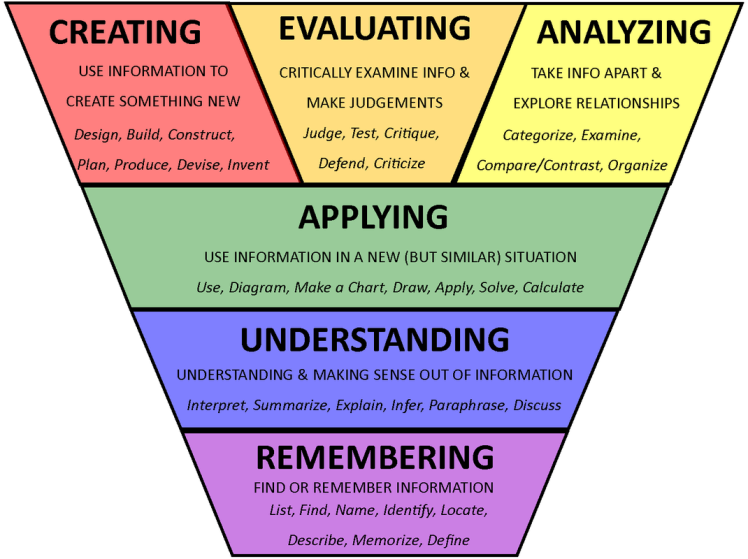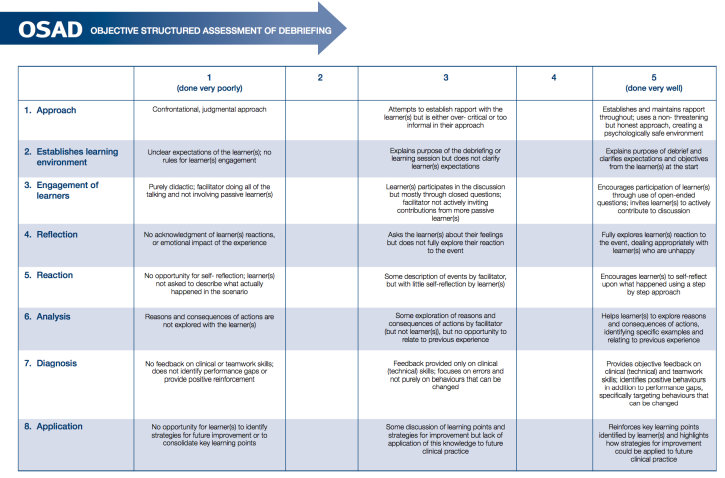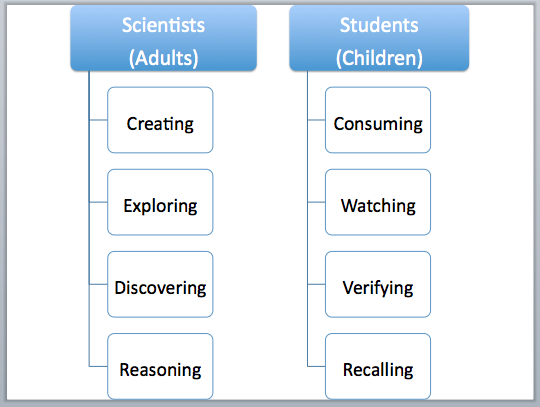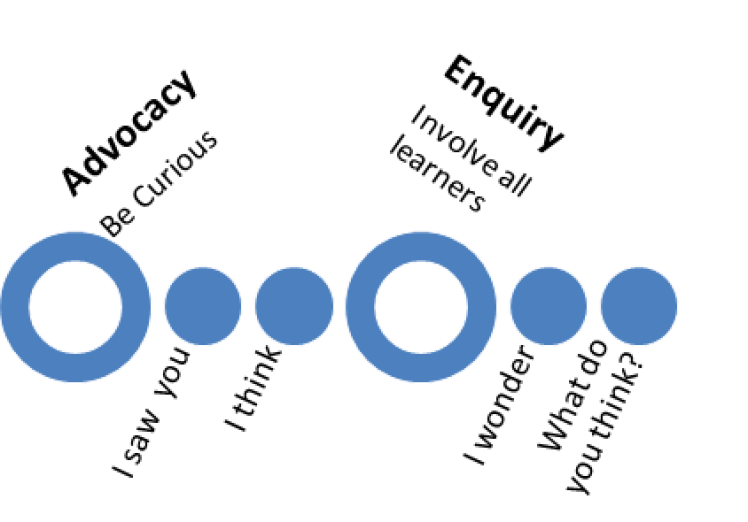
Overview
Good teaching is inspiring and challenging. As the learner you feel a sense of satisfaction from great education. The inspiring teacher leaves the learner hungry to know more about the subject matter and change for the better.
From the medical educators’s perspective, the goal is to select a teaching tool that will suitably inspire, engage and challenge the learners. So finding a method of delivery to fit the educational goal is important:
Key Point – “Set your learning objectives prior to planning your lesson. Select a method of delivery that best suits the educational goals. Use immersive simulation, stress inoculation and video technology when it is needed and not ‘just because you have it’ “
Medical Education moves in mysterious ways. In the words of Dr Victoria Brazil “everything works” and “nothing works“. This is not actually as paradoxical is it sounds. Extensive research has been carried out on learners at at Maastricht. The students at Maastricht had their yearly progress tested in standardised Progress Tests. This showed that students improved each year, but with little change in their relative standing compared to where they were at the start the course. In the field of postgraduate medical training there has also been debate about the effectiveness of education.
On the other hand, there is plenty of evidence that selected medical education interventions (including simulation) translate into improved performance. A great example is the mastery of central venous access in the intensive care setting. Furthermore, participants often state they have increased confidence in applying their skills as a result of Simulation Training. An essential component of great medical education seems to be high quality feedback for the learners. In simulation feedback and learning are delivered in the form of debriefing.
Key Point – “Timely Constructive Feedback is a key component of high quality adult education”
In this post we will talk about 5 Key Principles to build a simulation based education session. We will discuss the use of feedback using widely recognised Advocacy Enquiry model of debriefing.
-
Principle 1 – Your Learners are Adults
-
Principle 2 – Set your Objectives
-
Principle 3 – Get Curious about your Learners
-
Principle 4 – Keep it Simple
-
Principle 5 – Practice your Debriefing and Get Feedback
Adult Learners
Principle 1 – Know your Learner
Treating the (adult) learner like an adult is a key priority for the medical educator. Adults are known to learn differently to children. Creating relevancy, applications and opportunities for a ‘real world’ experience are key aspects of effective adult learning. Simulation Training is a modality that can create a realistic experience and fits in well with the various learning theories such as those presented by David Kolb in the 1970s. Simulation can allow experimentation, engagement and deep reflective learning.
The principles of adult learning have also been used by Frank Noschese in American High Schools for teaching science. Noschese has presented his views eloquently at TED’s New York Conference.
He encourages his students to apply their knowledge at every opportunity which fits in nicely I believe in what we are trying to active in Adult Education through Simulation Training.
Noschese’s Theory – Effective Learning
Features of Adult Learning
- Adults are internally motivated and self-directed
- Adults bring a great deal of existing knowledge – they have rich prior experiences
- Adults are looking for content that is relevant to their future
- Adults are practical and prefer problem based learning
- Adult learners like to be respected
Key Point – “Spend about 10% of your Simulation session on ‘introductions’. This should include orientation to the environment and in time for participants to ‘get to know each other’ “
The ‘10% Orientation’ reflects the importance of existing skills – adult participants have a lot to offer to the collective learning so we want to find out more about them! Investing time introduction places value and respect on the individual learners. Increasing the ‘introduction time’ also makes it more likely that the participants will be able to immerse themselves in the simulated activity and deeply reflect on what happened.
What’s the Point?
Principle 2 – Set your Learning Objectives
- Learning from Simulation will be dependent on the experience and the debriefing. As a result, planning objectives in advance is a key step in making a successful simulation.
- Review articles looking at features of successful simulation say that learning objectives are important
- In our experience it is reasonable to set between 2 and 4 major objectives – other learning points may come out during the debrief depending on the learners questions and experience of the simulation.
Key Point – “Set realistic and appropriate learning objectives to guide your simulation and debriefing.”
- The SHARP tool from the United Kingdom states that clear learning objectives should be stated in advance.
Curiosity Killed the Lecturer
Principle 3 – Get Curious (The Mindset required for Debriefing)
- Assumptions – it is important to assume the best of your leaners – they will readily pick up on what you think of them and respond accordingly (e.g. openness, defensiveness, ambivalence etc.)
The Basic Assumption – We believe that everyone participating in activities (here) is intelligent, capable, cares about doing their best and wants to improve.
- Avoid – “Old School” debriefing methods such as “Guess what I am thinking”, “Lecturing” and “Humiliation”
- Advocacy and Enquiry – Jenny Rudolf and colleagues at Harvard have developed the Debriefing with Good Judgement method of debriefing. Their classic article (2006) and high level training courses are highly recommended as a solid basis for educating yourself in high quality debriefing.
Download – Debriefing with Good Judgement (Harvard) (2006)
Simple?
Principle 4 – Keep it Simple
- It is impossible to cover as much content in simulation training as a lecture.
- Try to avoid lecturing in the debriefing (it is easy to regress to this if this is how you normally teach).
- It is important to understand that if clinical content (i.e. knowledge and understanding) is the goal then simulation is unlikely to be best choice of modality for delivering your education session.
- Simulation operates in “Bloom’s Taxonomy” at the APPLYING level and above:

- Simulation is best used for learning about the application (applying) of existing knowledge.
- Simulation is also useful for looking closely at the human interactions that occur high stakes circumstances (e.g. resuscitation and trauma) and routine clinical care (e.g. intimate examinations).
Moving Forward
Principle 5 – Practice your Debriefing and Get Feedback from Others
To be successful we need feedback on our simulations and on our debriefing. There are various methods of reviewing the quality of your Simulation and we recommend using the SHARP Feedback Model the Simulation and OSAD Model for the Debriefing. SHARP and OSAD were created by authors in London who studied the effect of using specific evaluation tools in their simulations.
Download – London Debriefing Handbook

The creators of the tool at Imperial College found that the use of the SHARP improved:
- Feedback in simulations
- Debriefing in the operating theatre (the primary setting of their research)
- Regularity of debriefings (they were occurring more often)
- Learning Objectives (they were set in 86% of simulations when SHARP compared to <30% prior to its use)
‘OSAD’ was used to measure the quality of the debriefing process:

OSAD stands for Objective Structured Assessment of Debriefing. It can be used by a skilled observer to give feedback to the debriefer(s). We recommend using this tool to help progress your debriefing skills – it only takes 5 minutes to get feedback on your debriefing.
Other applications – In our institution junior debriefers are encouraged to use the OSAD tool when observing a debrief to help them learn what the ‘features of what a high quality debrief look like’.
A more recent and pragmatic addition to the toolkit of evaluation is the PEARLS Framework. This can be used easily as a checklist and is recommended for improving debriefing as it provides specific scripting:
Take Home Points
- Remind yourself that your learners are adults and that ‘lecturing them’ or ‘trying to fix’ them, not only won’t work, but in fact may be counterproductive.
- Set some reasonably achievable and relevant learning objectives in advance of your simulation – use these to guide you in the Simulation and Debriefing phases
- Spend about 1/4-1/3 of the time in the Simulation and the majority of the time in the Debriefing
- Be genuinely interested in the learners – explore why things happened by taking ‘a standpoint of curiosity’. Not only does this come across well to the learners but it allows space for true reflective learning for the participants and for us as the “teacher”.
Website Recommendations
Debrief To Learn – www.debrief2learn.org
SimulCast – www.simulationpodcast.podbean.com
Print Outs
- PRINT OUT 1 – SIMULATION DEBRIEFING GUIDE
- PRINT OUT 2 – 7 SIMULATION PEARLS
- PRINT OUT 3 – HARVARD APPROACH



3 thoughts on “Advocacy and Enquiry In a Nutshell”
Comments are closed.